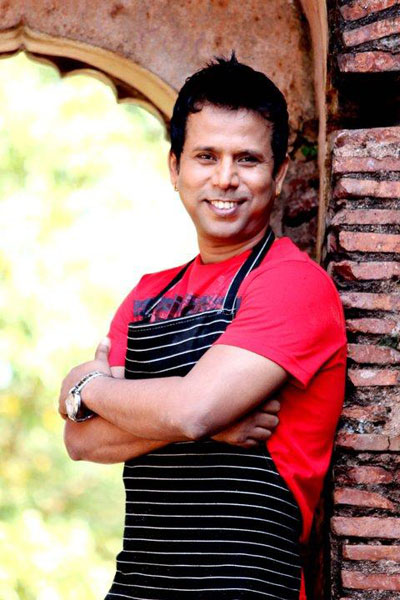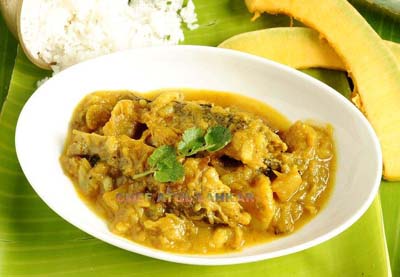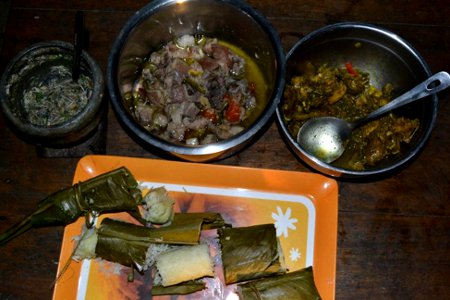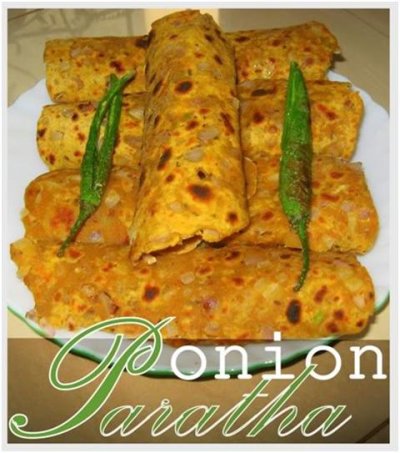A Moment with Chef Atul Lahkar
May 15, 2011
A message to all readers: At least go to dine Assamese food. Grow the habit of encouraging in dining Assamese food. – Atul Lahkar
It was indeed a pleasant moment with Chef Atul Lahkar, who brings his vision of art to the table. Witty and sharper than a knife, he exuberantly soaks up every word he speaks on food with versatility. A dedicated trendsetter of traditional food recipes and with talent unmatchable, he has brought Assamese food in the menu of fine dining. The chef’s restaurants, Khorika, King Chilly have become a rendezvous point for food connoisseurs for his enticing recipes.
This publication, Fried Eye features Atul Lahkar’s insightful observations and exploration on Assamese traditional cuisines and his delightful combinations.
‘Healthy, unique, and tasty’ is how Atul Lahkar describes his food creations. With profound affection he portrays his food as ‘sentiments and identity of society’. For him, food is a cultural symbolism of understanding social relations, kinship and heritage. Jolpan is associated with kheti-pothar (cultivation and field), he quickly adds letting out his bundle of thoughts on indigenous festivals in Assam associated with food.

Assamese Khaj ( Assamese meal )Assamese people always try to balance diet with lentil, leafy vegetable, khar ( alkaline), curd, mash potato, tenga cury (sour curry ), fish fry or curry, non vegetarian curry -Atul Lahkar
In an era of obsessed dining on pizzas, momos and burgers, Atul Lahkar’s creations stand out with interesting and alluring flavors made with local ingredients. In an aim to preserve identity, and to keep the connection between the food eaten and the land it comes from, he uses local ingredients, aromatic herbs and xaak pasoli (vegetables) with unique characteristics. On enquiring on what would be the uniqueness about ingredients, he promptly answers ‘it has all to do with the soil and climate that defines their unique properties which is not found elsewhere like the Joha saul’ (a variety of aromatic rice, not basmati). His enthusiastic collection of pictures on locally available herbs like nal tenga, bor manimuni, dhekiya, kalmao shak, morapator shak, bhrami, tengamora, dorun, bhedailota, turmeric leaves, thereka, bet lota, tajik, pita paleng, madhusuleng, masandari etc. form part of his invigorating and zesty flavours in his recipes.

Amora ( Indian hog plum). Gorai fish with amora tenga anja ( amora sour curry) is popular in lower Assam. This tenga is very tasty, healthy and used in treatment of stomach aches, fever and dysentery - Atul Lahkar
His passion to understand food has taken him to inaccessible interiors of North-Eastern states and exploration into an insightful journey of indigenous recipes exclusively known to few tribes. Being inquisitive, he had always been open to learning by watching, taking part in cooking and understanding food of many ethnic societies. His journey with Assamese cuisines started when he realized he was unable to identify and connect with food he was preparing that belonged to different region. ‘If I’m unable to understand and be familiarized with what I make, how would others? It was a wake-up call for me, to endeavor in Assamese traditional food which expresses deeper values and beliefs,’ he says.

Cooking Mising traditional recipes inside a the kitchen of a Mising household
His creativity on authentic traditional recipes are relished food-tales in distant lands. His traditional way of cooking in three prominent flavours, tenga, jola and meetha (sour, hot and sweet) have made a niche in echelon of fine cuisines. Affirmatively, he says, ‘Chinese cuisines and Mc Donald have dominated the world, why not us? I love my society. Since 15 years, my sole objective has been in promoting the uniqueness of our cuisines. Chinese food is known to world why not Assamese food?’
His adventure with food started in 1994-1996 with no professional qualification. Initially, although quite unsure about his culinary career, he did not allow his romance with food bury deep inside him. With innate qualities on precision of food crafting and food as hobby, he self trained himself to learn the art of culinary skills. He cherishes his moments with his sister during her treatment in Chennai, when he used to sprint-up volunteering in a nearby restaurant where he made many early morning trips to learn South Indian foods.

Buying a local fish
Atul Lahkar‘s concept of healthy recipes are not about strict nutrition philosophies, rather, they reflect nutrition basics and are prepared in a way that leaves the diners feeling light and appetizing. His choice on selecting nutritional ingredients is locally available herbs with medicinal properties cooked in traditional techniques and with less spice. He says 70% of ahar (food) is steamed, smoked or boiled. His volume of collections of recipes offers a compilation of flavourable recipes using many fresh ingredients.

One of his major ingredients is the nutty flavor of black sesame seeds paste. His exploration to understand food habits of indigenous people brings insightful knowledge on the use of black sesame in coking by many tribes like Karbi, Tiwa and Khasis. For an appealing sesame based dish, he applies the trick of combination of raw turmeric and black sesame paste and the additive component of a spoonful uncooked mustard oil at the end when the dish is about to be done. Ramsay Gordon, on his visit to Assam, was amazed with one of his creations with sesame paste. ‘How could you make the black stuff turn green’ he inquisitively asked Atul. Delightfully talking on ingredients used, he mentions bamboo shoot as his special ingredients. Endogenous to Assam, bamboo shoot grows abundantly and are consumed in dry texture, raw, fermented form or even boiled. He mentions that bamboo shoots do not form an indispensible part of kitchen in households in lower Assam as they believe that cutting off tiny baby bamboo shoots is to destroy a bamboo. On its use as an ingredient he applies them to balance the flavor and avoid making it as a dominant aroma.
As a chef, it has been challenging and rewarding to work with delicacies and food. Chef Atul Lahkar with his wealth of traditional recipes is currently expanding his reach towards India’s metropolitans to revive and give a new meaning in dining Assamese cuisines. We are looking forward to seeing when they open. Fried Eye team wishes you Good Luck! in your endeavour.
Glimpses of dishes by Atul Lahkar

Steamed Chicken

Tekeli Pitha (steamed rice cake) . I tried as fast food with stuffed chicken with steam rice. The challenge was to keep the pitha moist- Atul Lahkar

Baked Chicken with traditional Khamti rice wrapped in banana leaves
Related Links
Chef Atul Lahkar






bahut dhunia sir
lovely,nice,beuaty, invited me your home&restructure n.
I am proud of the work that Chef Atul is doing. I am interested to know if Chef Atul would explore the possibility of expanding this NORTHEAST cuisine to the WORLD. Let the world know how healthy, delicious and balanced the Assamese food is. Would love to have a reply or feedback from Chef Atul.
Loved reading the piece, great knowing about Atul Lahkar’s marvelous effort of bringing Assamese cuisine to the menu of fine dining as Sanjeeta has rightly said. Yes, can proudly say Assamese cuisine has come a long away, congratulations Atul Lahkar, our best wishes are always with you.
i like the the recipes have been described. hoping to read more as such …….keep it up
Thankyou
lovely! 🙂